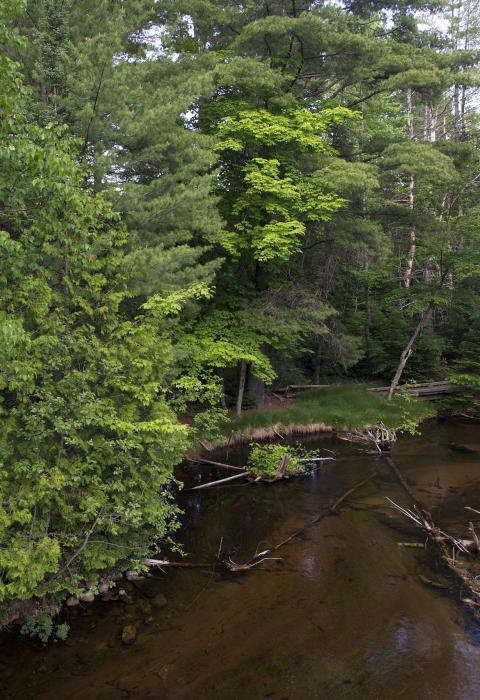Indian River
Michigan
The Indian River, located on the Hiawatha National Forest in Michigan’s Upper Peninsula, provides beautiful and varied northwoods scenery. The river flows through a variety of settings, ranging from a series of connected lakes in the upper sections, to a meandering channel in an incised valley through the middle section, to a braided channel and an area of extensive wetland before flowing into Indian Lake.
Trout fishing is good, and there is spawning habitat for lake sturgeon and habitat for eagles and ospreys. The river offers excellent canoeing and kayaking for all skill levels throughout the year due to its steady flow. There are numerous dispersed campsites along the river, as well as Widewater Campground.
Designated Reach
March 3, 1992. From Hovey Lake to Indian Lake.
Outstandingly Remarkable Values
Ecology
Late successional communities with long-lived species such as sugar maple, cedar, hemlock, red pine, and white pine are dominant, but there are areas of early successional communities, with short-lived species such as jack pine, aspen, white birch, and balsam fir an integral part of the corridor landscape. Noxious weeds are absent or present at very low levels. The river corridor serves as a linkage between areas outside the corridor that are managed as habitat for species requiring seclusion.
Recreation
Numerous opportunities exist in the Indian River corridor for the recreationist. Camping, canoeing, fishing, hunting, hiking, snowmobiling, and pleasure driving are important activities in the river corridor. Visitors perceive the Indian River corridor as an area to “get away from it all,” where the sights and sounds of nature dominate.
Scenery
The Indian River is known for its outstanding and diverse riverine scenery. Throughout the corridor, large older hardwoods, hemlock, cedar, and pine are predominant in the riparian zone visible from the river but may be interspersed with early and mid successional communities.
Water Quality
Water quality in the Indian River is an important component of the riparian ecosystem. In general, water quality meets or exceeds the standards set by the Michigan Water Resources Commission for the highest water quality classification. The river provides quality habitat for resident trout populations that are maintained primarily by natural reproduction. The amount of sand the river transports is in equilibrium with the ability of the stream to move it. Healthy aquatic invertebrate populations, more spawning areas and pools, and greater habitat diversity to support all components of the aquatic ecosystem are present.

